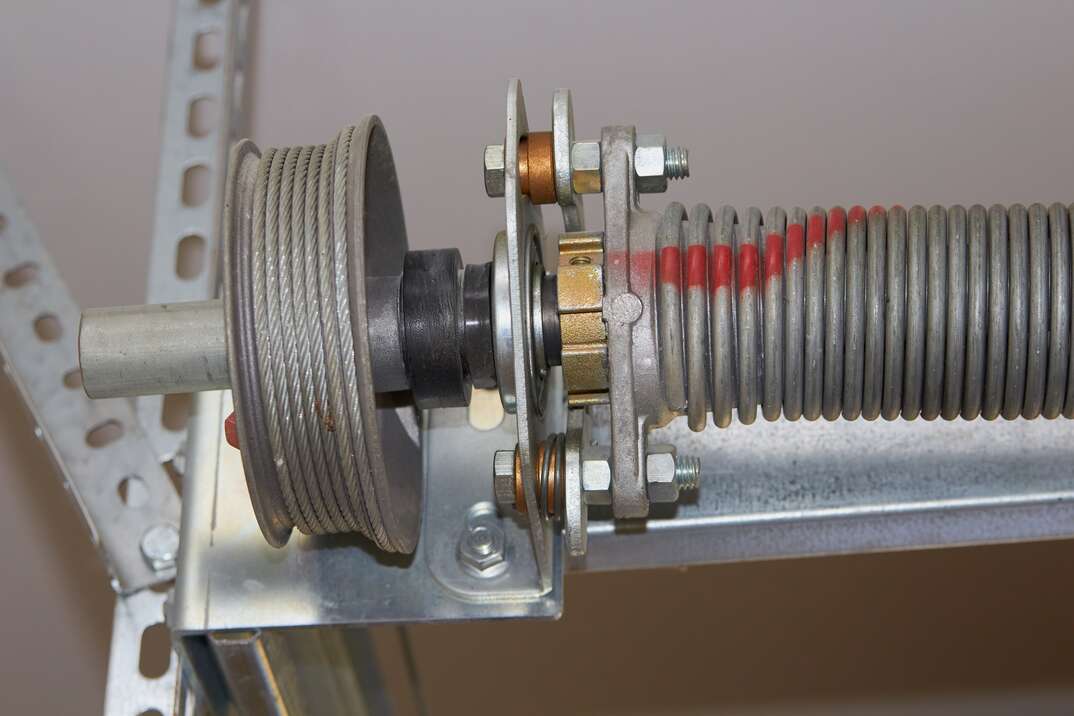How to Lubricate Garage Door Springs

Springing into action is what we expect when opening our garage door. We expect it to rise effortlessly, without noise, at the touch of a button. One often overlooked yet critical aspect of garage door maintenance is lubricating the springs.
Read More Home Improvement Articles
Proper maintenance is essential to ensuring your garage door’s longevity and optimal performance. Learn how to lubricate garage door springs with these step-by-step instructions.
Why Is Lubricating Your Garage Door's Springs Important?
Garage door springs are responsible for counterbalancing the door's weight and assisting in its smooth operation. Regular lubrication of these springs offers several key benefits:
Reducing Friction
The constant tension and movement of springs can result in friction, leading to wear and tear over time. Lubrication minimizes friction, allowing the springs to move effortlessly and reducing the risk of premature failure.
Preventing Rust
Garages can be humid environments, making springs susceptible to rust. Lubricating the springs forms a protective barrier that prevents moisture from causing rust, prolonging the springs' lifespan.
Enhancing Performance
Well-lubricated springs contribute to the overall performance of your garage door system. A smoothly operating door not only provides convenience but also avoids unnecessary strain on other components.
Minimizing Noise
A garage door with squeaky or creaking springs can make it sound like there's a monster living beside your house every time you open or close it. Lubrication helps eliminate these friction-induced noises, creating a quieter and more pleasant environment.
Tools and Materials Needed:
- White lithium grease or silicone-based lubricant
- Ladder
- Clean cloths
- Gloves (to protect your hands)
Step 1: Prioritize Safety
Begin by ensuring your safety. Disconnect the power to your garage door opener (if you have one) to prevent any accidental movement while you're working.
Step 2: Close the Garage Door
Close the garage door fully to allow easy access to the springs. You can latch the door closed so that no one from the outside could accidentally open it while you are working.
Step 3: Inspect the Springs
Carefully examine the springs for signs of wear, damage or rust. If you notice significant issues, such as a broken spring, you will likely want to replace it rather than applying lubricant to a faulty part. Garage door springs should always be replaced in pairs to keep the door correctly balanced.
Step 4: Clean the Springs
Using a clean cloth, remove any dirt, debris or old lubricant from the springs. Cleaning the springs ensures that the new lubricant can be applied effectively. You may also want to use this opportunity to clean the garage door tracks using a soapy solution and then rinse with clean water. If you choose to clean the tracks, be sure they are dry before you continue.
Step 5: Apply Lubricant
Utilize a white lithium grease or silicone-based lubricant and apply a generous amount to the springs. Concentrate on lubricating the coils and other moving parts of the springs. Be cautious to avoid getting lubricant on the garage door tracks or adjacent components, as this could lead to a buildup of grime that's best avoided.
Step 6: Distribute the Lubricant
After applying the lubricant, manually open and close the garage door a few times. This motion helps evenly distribute the lubricant along the springs, ensuring comprehensive coverage.
Step 7: Wipe off Excess Lubricant
Use a damp rag to wipe away any excess lubricant that may have dripped or accumulated on the springs.
Step 8: Test the Door
Reconnect the power to the garage door opener (if applicable) and test the door's operation. It should move with increased smoothness and reduced noise compared to before lubrication.
More Related Articles:
- How Much Does a Home Inspection Cost?
- 4 Tips for Hiring a General Contractor for Your Next Remodeling Project
- Should You Hire a Contractor or a Handyman?
- 5 Things to Look For When You're Hiring an Electrician
- What to Look for When Hiring an Exterminator
How Often Should You Lubricate Garage Door Springs?
The frequency of lubricating your garage door's springs depends on various factors, such as season. In general, you should aim to lubricate at least twice a year, ideally during the spring and fall seasons. These times of the year ensure that the springs remain well-lubricated and in optimal condition. If you live in an area with extreme weather conditions, such as high humidity or drastic temperature fluctuations, you may need to lubricate the springs more frequently to combat rust and wear. Likewise, if your garage door experiences heavy use — such as regular openings and closings — it's wise to lubricate the springs more often. Frequent usage can cause faster wear, making regular lubrication essential.
Applying garage door lubricant is a straightforward yet vital maintenance task that can help you extend the life of your garage door. By performing this task regularly, you ensure that your garage door operates effortlessly, quietly and efficiently. Lubrication decreases friction, prevents rust and contributes to the overall safety and convenience of your home. Keep in mind that a well-maintained garage door is not only an investment in your property but also in the security and functionality of your household.
Elocal Editorial Content is for educational and entertainment purposes only. Editorial Content should not be used as a substitute for advice from a licensed professional in your state reviewing your issue. Systems, equipment, issues and circumstances vary. Follow the manufacturer's safety precautions. The opinions, beliefs and viewpoints expressed by the eLocal Editorial Team and other third-party content providers do not necessarily reflect the opinions, beliefs and viewpoints of eLocal or its affiliate companies. Use of the Blog is subject to the
Website Terms and Conditions.The eLocal Editorial Team operates independently of eLocal USA's marketing and sales decisions.



